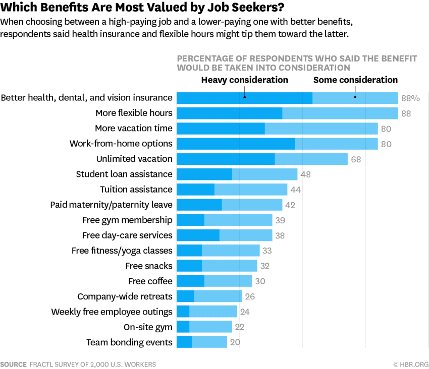Talented employees are a company’s most valuable asset. However, retaining them is a challenge for most organizations today. According to market data, the average employee turnover rate in 2023 was 41%. What’s more shocking is that this rate was a whopping 57% for professional services firms.
There’s no denying that employee turnover can be disruptive for any organization. It can result in a decrease in productivity, sales loss, increase in recruitment expenses, and other undesirable impacts. A high rate of staff turnover can also impact the morale of existing employees. That’s why companies need to prioritize employee retention.
So, what is employee retention? It refers to an organization’s ability to reduce turnover by fostering a positive work culture.
Well, retaining employees isn’t a magic trick. Rather, you have to follow a multilateral approach that focuses on employee engagement and appreciation. This blog explores the key aspects of employee retention in professional services and offers strategies to boost the same.
Let’s dive in!
Also Read: How to Calculate Employee Retention Rate in Your Organization
Why Do Employees Leave Professional Services Firms
Employees may leave an organization for several reasons. By identifying the underlying causes, you can implement effective employee retention strategies. Here are some of the major reasons behind employee turnover at professional services firms:
1. Demanding Workloads and Long Hours
In today’s competitive business landscape, employees often have to deal with intense workloads, long working hours, and unrealistic deadlines. These can result in stress and burnout, causing employees to look for alternate job options.
2. Lack of Career Growth Opportunities
Talented employees attach a lot of importance to skill development and career growth opportunities. According to a market study, about 74% of employees are likely to leave their organizations if such prospects are missing.
3. Inadequate Compensation and Benefits
Another reason is the lack of competitive compensation and benefits. Underpaid employees often feel demotivated to continue in their existing jobs and look for better opportunities.
4. Unhealthy Company Culture and Poor Work-Life Balance
An unhealthy company culture impacts the mental and physical well-being of employees. It can also lead to a poor work-life balance, thus driving employees to switch jobs.
5. Feeling Under-Appreciated and Undervalued
Lack of recognition and appreciation by the company leadership can make employees feel undervalued. This can cause employees to become less engaged in their jobs and explore other job avenues.
Also Read: Best Employee Retention Strategies to Keep Your Best Talents
What Are the Key Drivers of Employee Retention?
When it comes to employee retention, you can adopt several best practices to drive home the desired results. This is regardless of your company size. Let’s take a look at some of the key drivers of retention:
1. Building a Positive and Supportive Work Culture
A positive work culture can go a long way to make your employees feel connected to the organization. It can also enhance job satisfaction.
- Fostering Open Communication and Transparency: Communication plays a crucial role in developing trust and transparency within a workplace. By encouraging employees to share their concerns, ideas, and feedback, you can ensure two-way communication and address issues effectively.
- Investing in Employee Well-Being Programs: Investing in employee well-being programs boosts morale and reflects your commitment to providing the best work environment for your employees.
- Recognizing and Rewarding Achievements Publicly: Formal recognition and rewards serve as effective means to appreciate employees and celebrate their performance and achievements. They help to motivate employees and boost productivity.
- Encouraging Collaboration and Teamwork: A collaborative work environment encourages employees to develop bonds with their peers. It boosts a sense of camaraderie and inspires them to perform better as a team.
2. Providing Growth and Development Opportunities
With effective growth and development opportunities, you can help your employees to attain new skills and enhance their career graph.
- Offering Mentorship Programs and Leadership Training: Leadership training and mentorship programs can prepare your employees for higher roles within the organization and help align employee skills with organizational goals.
- Supporting Continuing Education and Skill Development: In today’s ever-evolving business landscape, it’s important to update employee skills. By educating and developing their skills continuously, you can boost their confidence and empower them to tackle new challenges.
- Matching Projects With Employee Interests and Skillsets: This approach creates a win-win situation for your employees and organization. It facilitates your employees’ efficiency, thus resulting in enhanced productivity for the organization.
- Encouraging Participation in Conferences and Workshops: Through these strategies, you can enable your employees to become experts in their fields. Such efforts on your part can contribute towards developing a growth mindset in your employees.
3. Ensuring Competitive Compensation and Benefits
A competitive compensation package can play a vital role in securing top talent and retaining them. It allows employees to know that you value their skills and drives job satisfaction.
Apart from this, you can also offer some other benefits to ensure employee retention, such as:
- Conducting Regular Salary Reviews and Adjustments: A consistent salary review process is an essential aspect of employee retention programs. With such a process in place, you can identify salary disparities and adjust the package of your employees. This will enable your employees to draw a competitive package and build their trust in you.
- Offering Comprehensive Health Insurance Plans: With comprehensive health insurance plans, you can make sure that medical expenses don’t burden your employees. At the same time, you can help them remain safe and secure.
- Providing Flexible Work Arrangements and Remote Work Options (If Applicable): Are you aware that 98% of employees today prefer working remotely? Flexible and remote work options enable employees to optimize their daily schedules and find a work-life balance. Such work arrangements also reduce work-related stress and enable employees to be more productive.
- Considering Creative Benefits Like Student Loan Repayment Assistance: Most employees today expect their employers to provide additional benefits. By providing creative benefits like student loan repayment assistance, you can help employees deal with their financial commitments. In return, such benefits can earn you the loyalty of your employees.
Also Read: Guide to Employee Engagement and Retention in Financial Services Industry
Additional Strategies for Professional Services Firms
It’s not enough to know what is the key to employee retention. You should also be able to implement that key effectively and at the right time. Here are a few additional strategies that can help to keep the turnover rate low at professional services firms:
- Invest in a Strong Onboarding Process: Every company must have a robust onboarding process in place. It helps you focus on an employee right from the recruitment phase and put your best foot forward. By creating a lasting impression during the onboarding phase itself, you can gain an advantage over your competitors and enhance your chances of retaining the employee.
- Conduct Regular Stay Interviews to Address Concerns Proactively: When you conduct stay interviews and address concerns proactively, you help create a supportive work environment for your employees. Such interviews enable you to gather employee feedback and act on them to address their concerns and needs. This approach enables you to reduce the risk of turnover threats by fostering employee engagement.
- Empower Employees With Decision-Making Authority: Empowered employees experience a higher degree of job satisfaction. When they exercise their power to make decisions, they begin taking ownership of their work as well. This has a positive impact on their contributions and enhances their job satisfaction, thus making it more likely for them to remain with your organization.
- Promote Work-Life Balance and Avoid Excessive Overtime: Maintaining a good work-life balance is essential for employees to remain healthy and productive. By promoting work-life balance, you can help them to avoid excessive overtime. Such efforts will encourage your employees to continue with your organization and contribute to a low turnover rate.
Also Read: HR Career Focus: Exploring the Role of an Employee Experience Director
Summing Up
Employee retention in professional services need not be a challenging task. You need to focus on the reasons behind employee turnover. This will help you to get clarity about how to resolve the issues. Once you do that, you can make strategic moves and introduce relevant changes in your organization.
If you are looking for help to implement the right strategies and level up your workforce, you can consider Engagedly. It’s a talent management platform that can help create a more engaged, high-performing workplace with a reduced turnover rate.
Frequently Asked Questions
Q1. How does employee retention impact productivity?
High turnover rates can impact an organization’s workflow and result in lower productivity. On the other hand, when an organization manages to retain employees, it leads to a stable work environment. It allows employees to focus on their work and helps improve productivity.
Q2. Why is employee retention important?
When an employee quits an organization, it loses more than just talent. It also loses experience, ideas, and intellectual property. Further, the organization has to invest time, money, and effort to recruit and train another individual. By retaining employees, the organization can avoid all these hassles.
Q3. What is the most essential aspect of an employee retention strategy?
One essential aspect of a retention strategy is making your employees feel connected to your organization. Improving employee engagement and instilling a sense of belonging is an effective way to achieve this objective.







